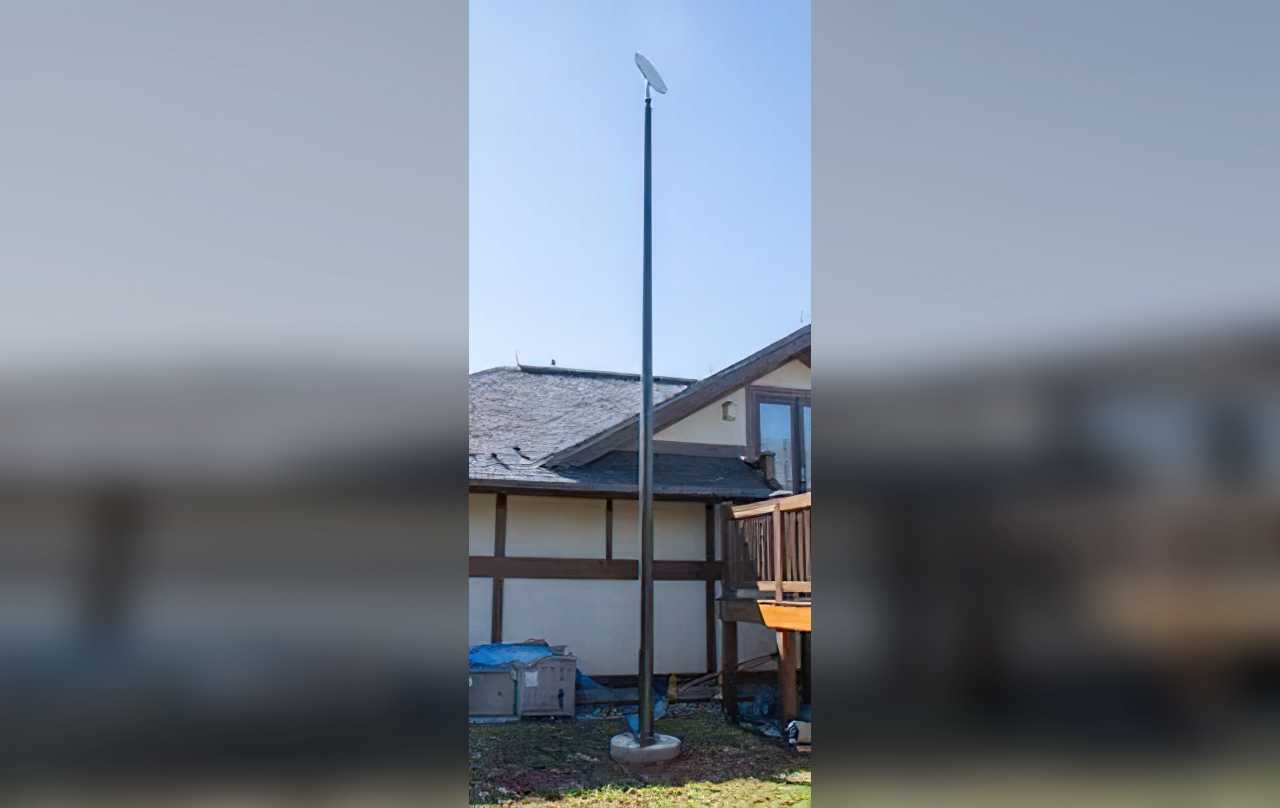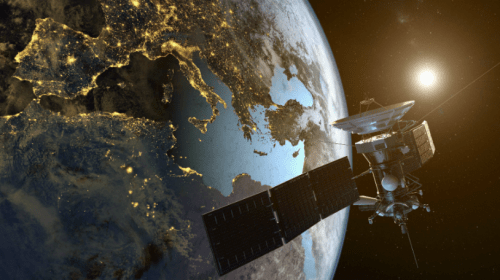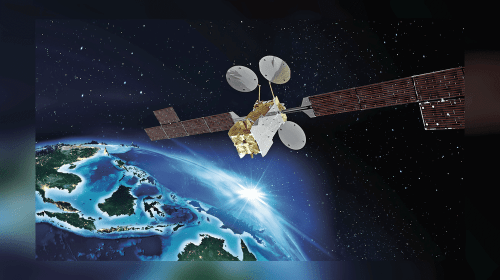The Shift to Enterprise
May 28, 2022
LEO Constellation providers began with an assumption that there was a huge market of users who wanted to be connected to the internet but could not do so using traditional solutions. However, in a struggle to find profits, NGSO (Non-Geostationary Orbit) operators have diverted away from plans to target rural broadband consumers and are looking instead at supporting government and military applications and connecting cruise ships. OneWeb and the SES O3b constellations are examples of this, and even Starlink is introducing an enterprise service.
Where is the Market for NGSO?
OneWeb and Starlink are waking up to a new reality suggests Satellite Mobility World May 2022. Indeed, industry leaders such as Tom Choi have been warning for some time that this consumer market may not exist. In our February 18, 2021, article, LEO versus MicroGEO we noted, “Another concern, expressed by Choi, is that the capacity is in the wrong place. This is the broadband density problem. LEO satellites spread their capacity, equally across the entire Earth, but most of the users inhabit only 10% of it. There will be aircraft and maritime services on a global basis, but in general, as much as 90% of total capacity could be idle. In the meantime, the places where there are users, have no access to that wasted capacity.” Choi warned that the expense of building, launching, and maintaining thousands upon thousands of satellites, when most of the overall capacity sits idle, could catch up with these new projects. Was he right?
NGSOs are shifting away from consumer markets to enterprise markets, which are mostly niche markets such as maritime, government and other enterprise class markets. Here they will find tough, well entrenched competition. They will find that there are requirements for Service Level Agreements (SLA) that guarantee speeds, uptime, response times, etc. Satellite Mobility World suggests that the shift to airlines, military, cruise ships and telcos may be too late, and opportunities too limited. For the opportunities that do exist, QoS or quality of service will be critically important. Let’s consider a key difference between GEO and LEO satellites.
Making and Breaking Connections
GEO satellites are permanently connected to the VSAT terminals on the ground, whereas LEO satellite connections are lost every few minutes, for up to an hour. This is because the NGSO satellites are orbiting the Earth at low altitudes, and passing by overhead very quickly, so these satellites are only visible to the antenna (node) for a short time. As one satellite goes over the horizon, there must be another coming up or passing by to take its place. The lower the LEO constellation, the more satellites that will be required to make sure there is always at least one satellite overhead. Think of a flashlight held a foot above the ground. You’ll see a small circle of light. Now lift the flashlight and the circle of light gets larger. This is how LEO satellites work. What this means is a node on a typical LEO satellite constellation operating at 1000 km (620 mi) will experience over 200 connections being dropped and reconnected per day. For an entire constellation, with service for multiple networks and nodes, this results in hundreds of thousands of connections every day. Some of the providers are adding ISR or Inter-Satellite Relay links so satellites can switch traffic to each other and then back to the ground. This will further increase the number of connection/reconnections. The number of connections is going to skyrocket. According to “The Quality-of-Service Challenge for NGSO Constellations,” Via Satellite| April 28, 2022, Starlink needs 30 million users to meet their $35 billion revenue goal. They have about 250,000 users as of this article. How well will all this connection switching scale?
Of course, this isn’t how terrestrial networks operate. Circuits are provisioned at startup and when a connection is lost, it triggers service tickets and potentially outage credits from the provider to the customer. Terrestrial telecom service providers are happy to engage in service level discussions with prospective clients on the allocation and handling of bandwidth. The underlying technologies that secure the link, the bandwidth and the throughput are all very straight forward. This is not the case for NGSOs who will attempt to provide similar service guarantees, but the issue of how to manage thousands of connections being dropped and restored on an ongoing basis, is one the terrestrial providers don’t have to deal with.
One SLA component enterprise clients are sure to want is a guarantee that no connection will be dropped before a new one is setup and pulling data, the so called, “make before break.” One can foresee guarantees like this in the future when there are enough satellites in view, and they have the spectrum, bandwidth, and processing power to support all those connections, but will they? If it turns out there is insufficient processing power to handle all those reconnections or not enough bandwidth to support the number of users who want service, the outlook is uncertain. Of course, LEO services can be marketed as best effort service, but this is normally how consumer services, not enterprise services are delivered. How viable is the enterprise market for NGSOs?
A Crowded Field
While the LEO market is substantial, there are several players contending for it, and that includes existing services from GEO satellites and expanding terrestrial services. These providers already deliver SLAs that NGSOs will have to match to remain competitive. The international market is not looking good for them, as countries such as Russia close their market and make plans to launch their own LEO constellations. China and India are doing the same, and even the EU is planning a LEO network. The cost for LEO constellations is very high and the question of whether there is enough business from already competitive niche markets, is open to debate. Additionally, there is only a short window of time to start achieving profits. Within five years, the LEO satellites first launched by Starlink will begin falling from the sky. The very thing that gives them latency and performance advantages, leads to their short-term downfall. Will there be enough revenue to replace them?
Starlink has requested approval to grow its constellation to 30,000 satellites, which should allow them to begin offering “make before break” SLA guarantees. Unknowns regarding collisions, interference, environmental concerns, and the growing voices of angry astronomers may get in the way.
Limited View
Despite the large number of satellites up there now, the problem Tom Choi warned of persists and is becoming well known to the consumer market. In LEO versus MicroGEO, Tom Choi described the MCE or Minimum Clearance Elevation that is required to make sure your antenna node can always see at least one satellite all the time. A friend living in central Virginia ended up mounting his Starlink antenna on the top of a very tall pole to finally get it high enough to reduce the number of out-of-service disconnections to a bearable level. Will Starlink be able to get the funding it needs to build, launch, and maintain all these new satellites, so such efforts aren’t required? Will they have the bandwidth and horsepower to deliver the promised services? Will the market be there?

OneWeb orbits their constellation at a higher altitude, so they need fewer satellites. They are planning to add optically linked satellites in the second generation. This constellation is supported by British politicians and investors who will benefit from the constellation building contracts, but note that OneWeb has been through five CEOs, a bankruptcy and new business plans. Will they get it right this time?
Another contender is Telesat who designed their LightSpeed satellites for the enterprise market right from the start. Their satellites expect a 10-year lifespan, so they have a longer period to achieve profitability, but they start off heavily in debt. They recently announced a reduction in the number of satellites they are going to deploy. Originally slated for a fleet of 298 satellites delivering 15Tbps, they are planning to scale back to 188 satellites. The reduction, they say, comes from supply line and inflation costs.
Amazon’s Kuiper does not have the same intense need to generate subscriber revenue as its future is in the Cloud. Its constellation could potentially be built to enterprise class standards and offered for free or minimal cost. The goal would be to increase traffic in the Cloud. They don’t care about the satellite revenue. Amazon has 30% of a $500 billion market with about 80% of its profits from AWS. Increasing their share of the Cloud market by just a couple percent will justify the $10 billion it plans to spend on Kuiper. Meanwhile OneWeb and Starlink seek out the unserved billions who may or may not be able to afford internet service, while anxiously watching Kuiper emerging from behind them.
If the real market is the enterprise and not consumer services, the advantage will go to the provider able to meet their customer’s quality of service standards and guarantee them with SLAs. A robust, well documented system guaranteeing quality of service by managing bandwidth and the massive numbers of connections that must be supported, likely has the best shot at commercial success. The best effort approach is unlikely to prevail in the enterprise market that NGSO attention seems to be shifting towards.
As a player in the enterprise broadband satellite market, BusinessCom is keeping a close eye on developments.





